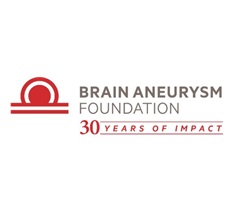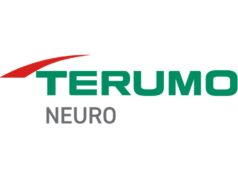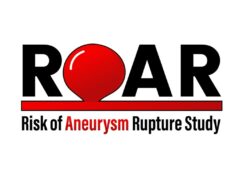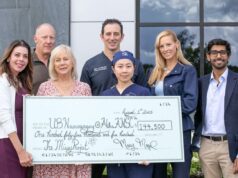 The US Brain Aneurysm Foundation (BAF) has announced its 2025 research grant recipients, recognising 14 researchers for their “exceptional initiatives” aimed at saving lives and reducing disabilities. The researchers were formally recognised at the BAF’s 19th Annual Research Grant Symposium (11 September, Scottsdale, USA), and have received a total of US$600,000 in funding.
The US Brain Aneurysm Foundation (BAF) has announced its 2025 research grant recipients, recognising 14 researchers for their “exceptional initiatives” aimed at saving lives and reducing disabilities. The researchers were formally recognised at the BAF’s 19th Annual Research Grant Symposium (11 September, Scottsdale, USA), and have received a total of US$600,000 in funding.
“With already limited NIH [National Institutes of Health] funding for brain aneurysm research now at risk, our ongoing support for this work has become even more critical,” said Christine Buckley, executive director of the BAF. “We must work to ensure that promising science receives the resources needed to become life-saving treatments. We are proud to support the remarkable work of these researchers, and to know that the funds we raise go directly to those who can have the greatest impact in the field and for the patients.”
The BAF claims in a press release that federal research funding for brain aneurysms remains “disproportionately small” compared to other neurological disorders and stroke, with less than US$3 committed to research for each person impacted by the condition.
During Brain Aneurysm Awareness Month in September—and throughout the year—the BAF provides critical resources and support for survivors, their families, and caregivers. And, due to a high rate of misdiagnosis, the BAF also supports educational programmes for individuals and medical professionals aimed at increasing awareness of the signs and symptoms of a potential aneurysm rupture.
“Academic research has remained the foundation of the remarkable advances our field has achieved over my three decades in practice,” stated Michael Lawton (Barrow Neurological Institute, Phoenix, USA). “The BAF continues to play an outsized role in supporting researchers, and identifying and funding innovations that will drive the next generation of breakthroughs and critical interventions for patients.”
The 2025 BAF research grant recipients are as follows:
- F N U Ruchika (Johns Hopkins University, Baltimore, USA); ‘High-resolution imaging of net mediated vasospasm in SAH [subarachnoid haemorrhage]—identifying a therapeutic window’
- Isaac Abecassis (University of Louisville, Louisville, USA); ‘Modelling jet flow impingement in intracranial aneurysms using CFD [computational fluid dynamics], 4D flow MRI [magnetic resonance imaging] and 3D printing’
- John Hagan (UTHealth Houston, Houston, USA); ‘Whole genome sequencing to identify candidate familial intracranial aneurysm genes’
- Jose Javier Provencio (University of Virginia School of Medicine, Charlottesville, USA); ‘Myeloperoxidase inhibition in blood and CSF [cerebrospinal fluid] of patients with SAH’
- Zahra Hasanpour-Segherlou (University of Florida, Gainesville, USA); ‘Biliverdin reductase-A, a heme degradation pathway enzyme, as a novel therapeutic strategy for vasospasm protection in SAH’
- Seon Kyu Lee (Montefiore Einstein, New York, USA); ‘AI [artificial intelligence] assisted multicompartment cytokine reactome mapping in aSAH [aneurysmal SAH] patient with vasospasm’
- Julian Clarke (University of Washington, Seattle, USA); ‘The role of brain capillary pericytes in delayed cerebral ischaemia after aSAH’
- Takuma Maeda (Barrow Neurological Institute, Phoenix, USA); ‘Blocking the PD-1/PD-L1 axis to prevent intracranial aneurysm rupture’
- Peeyush Thakamani Pandit (UTHealth Houston, Houston, USA); ‘Repurposing cancer drug to promote vascular repair and neuroprotection after SAH’
- Humberto Mestre (Massachusetts General Hospital, Boston, USA); ‘Enhancing glymphatic-lymphatic clearance as a novel strategy to treat SAH’
- Lei Huang (Loma Linda University, Loma Linda, USA); ‘The role of aberrant Piezo1 signalling in delayed cerebral ischaemia after SAH’
- Patrick Fillingham (University of Washington, Seattle, USA); ‘An automated computational method for evaluating cerebral aneurysm coiling strategies’
- Kerry Poppenberg and Tatsat Patel (University at Buffalo, Buffalo, USA); ‘Morphological and molecular markers for IA [intracranial aneurysm] screening in patients with family history’
- Devin McBride (UTHealth Houston, Houston, USA); ‘Role of annexin after SAH’
“Grant funding from the BAF supports our research into novel diagnostics and emerging treatment options, helping us further our commitment to helping brain aneurysm patients access cutting-edge care,” commented grant recipient Abecassis. “We are using innovative imaging modalities to help understand the risk of rupture for certain aneurysms, and to create a new imaging modality that can be broadly accessed and that ultimately guides patients and providers towards treatment of high-risk aneurysms. This work would not be doable without the generous support from the BAF.”










